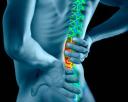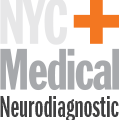Low Back Pain

 Alternative Names: Backache; Low back pain; Lumbar pain; Pain – back
Alternative Names: Backache; Low back pain; Lumbar pain; Pain – back
Definition Pain felt in your lower back may come from the spine, muscles, nerves, or other structures in that region. It may also radiate from other areas like your mid or upper back, a hernia in the groin, or a problem in the testicles or ovaries.
You may feel a variety of symptoms if you’ve hurt your back. You may have a tingling or burning sensation, a dull aching, or sharp pain. You also may experience weakness in your legs or feet.
If you are like most people, you will have at least one backache in your life. While such pain or discomfort can happen anywhere in your back, the most common area affected is your low back. This is because the low back supports most of your body’s weight.
Low back pain is the #2 reason that Americans see their doctor — second only to colds and flus. Many back-related injuries happen at work. But you can change that. There are many things you can do to lower your chances of getting back pain.
Whether identified or not, there are several possible sources of low back pain:
- Small fractures to the spine from osteoporosis
- Muscle spasm (very tense muscles that remain contracted)
- Ruptured or herniated disk
- Degeneration of the disks
- Poor alignment of the vertebrae
- Spinal stenosis (narrowing of the spinal canal)
- Strain or tears to the muscles or ligaments supporting the back
- Spine curvatures (like scoliosis or kyphosis) which may be inherited and seen in children or teens
- Other medical conditions like fibromyalgia
After examination there may be a need to perform additional tests. Tests that might be ordered include an X-ray, a CT of the lower spine or MRI of the lower spine, EMG testing.
Treatment will depend on the source and severity of the pain and may include pain medications, physical therapy, exercise program, nerve blocks or surgery.

